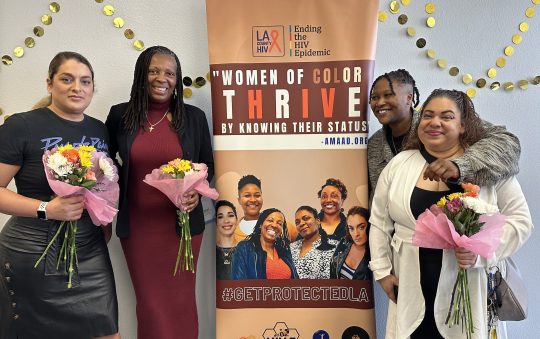
Forty years into the HIV/AIDS epidemic in the United States, African Americans continue to be disproportionately affected by HIV/AIDS. In 2017, African Americans represented 13 percent of the general U.S. population, but they represented 43 percent of newly diagnosed cases of HIV in the U.S. and dependent territories. The Center for Disease Control and Prevention (CDC) has reported that African American women are 20 times more likely to be infected with HIV than Caucasian women of similar age and that 50 percent of gay African American men will become infected with HIV in their lifetime.
In the late 70s, when HIV was first described by physicians in the U.S., it was thought that this was a disease only affecting “gay White men.” HIV is a human disease and can affect anyone — straight, gay, bisexual, Black, White, or Brown. Early on in the epidemic, there were major challenges to combating the spread of HIV which included lack of access to care, ignorance about disease transmission, denial of one’s risk, conspiracy theories, as well as the stigma, shame, denial, fear and homophobia associated with HIV. Whereas in the early 80s, HIV/AIDS was an automatic death sentence, today it is considered a “chronic manageable disease,” if identified and treated early in the disease process. Antiretrovirals (ARVs) have been shown to effectively control the replication of the virus, thus someone currently infected with HIV, once placed on ARVs, can lead a healthy life.
Within the past 10 years, new “Bio-Medical Tools” have become available to combat HIV infection. This “Bio-Medical Tool Kit” currently includes multiple bio-behavioral models and interventions to reduce the acquisition and/or transmission of HIV and other STIs. These tools include: male and female condoms, microbicides, targeted evidenced-based risk reduction interventions, ARVs, Post Exposure Prophylaxis (PEP) and Pre Exposure Prophylaxis (PrEP).
PEP involves taking HIV medications within 72 hours after possible exposure to HIV to protect someone from becoming infected with HIV. Data suggests that PEP can reduce one’s risk of becoming HIV positive by approximately 80 percent.
PrEP is an HIV prevention treatment for HIV in which antiretroviral drugs are taken by HIV-uninfected individuals who are at high risk of infection with HIV. PrEP’s efficacy is directly related to an individual’s adherence to taking the ARVs on a daily basis in order to maintain a therapeutic level of the drug in the blood stream. Numerous PrEP clinical trials over several years, have demonstrated greater than 90 percent efficacy of PrEP in reducing transmission of HIV among men who have sex with men (MSM) and transgender women (Male-to-Female).
Researchers and community advocates have begun to focus more on the role of “social determinants” in HIV transmission and progression meaning that where you live, eat and work; levels of poverty, institutional racism, educational attainment, employment status, public health policies and social networks all come into play when determining the dynamics and distribution of HIV/AIDS among specific populations and/or communities.
Professor Davis is currently implementing an NIH funded study targeting at risk African Americans in five cities to assess African American’s knowledge of PrEP and PEP. The preliminary findings demonstrate that there is a need for greater education on PrEP and PEP in the African American community among at risk individuals. Major concerns with PrEP and/or PEP expressed by the 96 study participants recruited to date, had to do with: The cost to utilize PrEP; PrEP’s side effects; PrEP does not provide protection from other STIs; maintaining adherence is difficult; and HIV stigma. Individuals also mentioned that there is limited education available on the benefits of PrEP and there was almost total lack of knowledge on PEP among the study participants.






